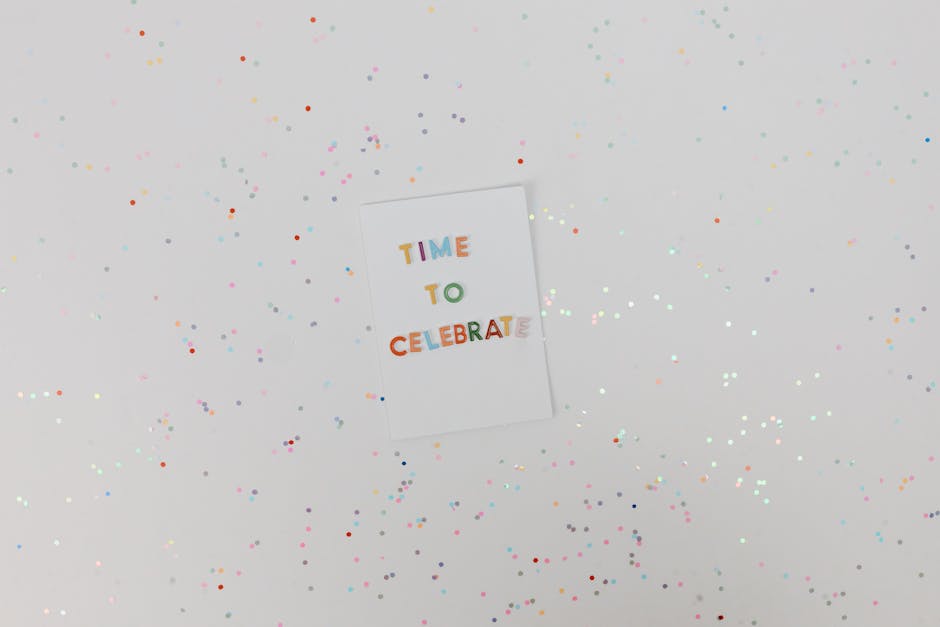Hi, Friend! Jen Glantz here. I’m a bestselling author, the first ever bridesmaid for hire and have been hired by hundreds of brides all over the world. Let’s talk about bachelorette question games.
According to a recent survey by WeddingWire, 78% of brides consider games the most memorable part of their bachelorette celebrations. I’ve planned dozens of bachelorette parties and discovered that question games consistently create the most laughter, bonding moments, and lasting memories. Whether you’re organizing an intimate gathering or a wild weekend getaway, the right question games can transform your celebration from ordinary to extraordinary.
Quick Resources:
- The #1 Bachelorette Party Planner Tool
- A free Bachelorette Party Game Tool
- Our Bachelorette Party Guide: Tons of advice, tips, and more!
- Bachelorette party games and accessories all in one place
- A guide on creating a bachelorette party budget
- Our #1 Wedding Speech and Vows Writing Tool
Important Considerations When Choosing Bachelorette Question Games
Selecting the right bachelorette party questions requires thoughtful planning and consideration of multiple factors. The bride’s personality should be your primary focus—some brides enjoy risqué content while others prefer more conservative activities.
When evaluating personality, assess the bride’s comfort with public attention, willingness to discuss personal topics, and preference for structured versus spontaneous activities. These factors will guide your game selection process and help ensure everyone has a great time.
Group dynamics, venue appropriateness, and time constraints also significantly impact which games will work best. Pay attention to venue acoustics and seating arrangements—circular seating promotes better engagement than linear arrangements, while background noise levels above 70 decibels can make verbal games challenging.
Planning a bachelorette party can be overwhelming, especially for first-time bridesmaids. Our guide on how to not hate being a bridesmaid offers valuable insights for enjoying the process while creating a memorable experience for the bride.
| Game Selection Factors | Considerations | Impact on Game Choice |
|---|---|---|
| Bride’s Personality | Extroverted vs. Introverted | Determines spotlight comfort level |
| Conservative vs. Adventurous | Guides question content boundaries | |
| Structured vs. Spontaneous | Influences game format selection | |
| Group Dynamics | Size of group | Affects participation logistics |
| Familiarity among guests | Determines depth of personal questions | |
| Age range | Guides appropriate content level | |
| Venue Constraints | Noise level | Impacts verbal game viability |
| Space availability | Determines movement-based options | |
| Privacy level | Guides sensitivity of question content | |
| Time Management | Event duration | Sets number of games possible |
| Competing activities | Affects game depth and length | |
| Attention spans | Guides game complexity |
Bride Knowledge Games
1. How Well Do You Know the Bride?
This classic game tests guests’ knowledge about the bride’s life, preferences, and memorable moments. Questions for the bachelorette range from basic facts to deeper insights about her personality and history. The game works exceptionally well for mixed groups as it helps everyone learn more about the bride while creating a competitive yet fun atmosphere.
> View All Bachelorette Party Tools Here
You’ll need to collect accurate answers from the bride beforehand, but preparation is otherwise minimal. I’ve found that the optimal question count is 15-20 questions with a mix of 60% factual and 40% opinion-based questions to maintain engagement throughout the game.
Response collection methods include digital forms with automatic scoring or physical answer sheets with manual tabulation—digital methods reduce preparation time by approximately 45 minutes, which can be a lifesaver when you’re juggling multiple party responsibilities.
For “How Well Do You Know the Bride?” we created custom scorecards for Jessica’s bachelorette weekend in Nashville. Questions included basics like “What’s Jessica’s favorite cocktail?” alongside deeper questions like “What’s the one thing Jessica hopes to accomplish in her first year of marriage?” We collected answers from Jessica via email two weeks before the event and created a mix of multiple-choice and short-answer questions. The winner received a bottle of the bride’s favorite wine, and Jessica was genuinely surprised at how well her college roommate remembered details about her childhood that even her sisters had forgotten. The game took approximately 25 minutes to complete and served as an excellent icebreaker for guests who were meeting for the first time.
2. Bride or Groom Quiz
This game reveals insights into the couple’s relationship dynamics by asking questions about who does what in the relationship. Questions like “Who said ‘I love you’ first?” or “Who is more likely to forget an anniversary?” create both laughter and heartfelt moments.
Question formulation should follow the “Who is more likely to…” format for consistency and clarity. This structure makes the game easy to follow and keeps the energy flowing.
Information collection from the groom should occur at least 7-10 days before the event to allow for discrepancy resolution and question refinement. This buffer time is crucial for ensuring accuracy and avoiding awkward moments during the party.
Looking for more wedding game ideas beyond the bachelorette party? Check out our collection of wedding reception games that can keep your guests entertained throughout the entire celebration.
Start planning the bachelorette party here >>
3. Before & After
This game explores how the bride’s life has changed since meeting her partner. Bachelorette questions contrast her habits, preferences, and lifestyle before and after the relationship began. The format creates a narrative of the bride’s love story while highlighting her personal growth.
Effective question structure follows a clear temporal pattern with specific time markers (e.g., “Before meeting her partner…” versus “Now that she’s engaged…”). This approach helps guests understand the transformation the bride has experienced.
Topic progression should move from superficial (daily habits) to meaningful (values, priorities) for optimal emotional engagement. Starting with lighter topics helps warm up the group before diving into more significant life changes.
The game works well for both close friends and acquaintances, as it reveals new information even to longtime friends. I’ve seen this game bring tears to the eyes of mothers and best friends alike as they reflect on the bride’s journey.
4. The Newlywed Game (Pre-Wedding Edition)
This pre-wedding version of the famous TV game tests how well the bride knows her future spouse. The bride answers questions about her partner, and guests try to guess if she got them right.
Question categories should include daily habits (30%), relationship milestones (30%), preferences (20%), and future plans (20%) for comprehensive coverage. This balanced approach ensures you touch on all aspects of the couple’s relationship.
Response verification requires secure communication with the groom to prevent answer leaks—password-protected documents or sealed envelopes are recommended methods. The last thing you want is for the bride to get a sneak peek at the answers!
The game often reveals surprising insights about the couple’s relationship and creates humorous moments when expectations don’t align. You’ll need to collect answers from the groom beforehand, but the payoff in entertainment value is worth the extra effort.
Want to take your couple’s games to the next level? Our complete guide to The Newlywed Game provides even more question ideas and format variations that can be adapted for your bachelorette celebration.
> View All Bachelorette Party Tools Here
5. Timeline Trivia
This game tests guests’ knowledge of the chronology of the bride’s relationship. Questions focus on milestone dates and the progression of the couple’s story—from first meeting to engagement.
Effective timeline construction requires verification of 8-12 key relationship milestones with both partners to ensure accuracy. Double-checking dates prevents embarrassing mistakes during the game.
Visual presentation methods include physical timeline displays or digital slideshows with progressive revelation of events for maximum engagement. The visual element adds another dimension to the game and helps guests follow along.
The game educates guests who don’t know the couple’s full story while creating a shared understanding of their journey together. It works well in any venue and with any group size, making it a versatile addition to your bachelorette game lineup.
Revealing/Personal Questions
6. Never Have I Ever (Bachelorette Edition)
This bachelorette adaptation of the popular party game involves statements beginning with “Never have I ever…” followed by an action or experience. Players who have done the stated action must indicate so (often by drinking or lowering a finger).
Statement construction should balance relationship-focused topics (40%), general life experiences (40%), and wedding-related scenarios (20%). This mix keeps the game interesting and relevant to the occasion.
Escalation pacing should begin with mild revelations and increase in intimacy every 5-7 statements to maintain comfort while building engagement. Starting with tamer statements helps everyone warm up to the game before diving into more personal territory.
The game reveals surprising information about participants and creates plenty of laughter. It requires no preparation but works best with close friends in private venues where everyone feels comfortable sharing.
7. Truth or Dare Questions
This classic game offers players the choice between answering a personal question truthfully or completing a dare. The bachelorette game questions typically focus on relationship experiences, embarrassing moments, or wedding-related challenges.
The question-to-dare ratio should be approximately 60:40 to accommodate varying comfort levels with physical challenges. This balance ensures everyone can participate in a way that feels comfortable for them.
Dare complexity should consider venue limitations—physical space requirements, noise restrictions, and privacy levels directly impact executable dare types. Always be mindful of your surroundings when planning dares.
The game is highly customizable based on group comfort level and creates memorable moments. Having a prepared list helps maintain momentum throughout the game and prevents awkward pauses while people think of questions or dares.
Start planning the bachelorette party here >>
8. Most Likely To…
This game involves statements about who in the group is “most likely to” do something specific. Everyone points to their choice simultaneously, creating laughter when multiple people select the same person.
Statement categories should include wedding day scenarios (30%), honeymoon predictions (20%), marriage life projections (30%), and general personality traits (20%). This variety keeps the game fresh and engaging.
Voting mechanisms range from simple pointing to digital polling tools—synchronous revelation increases humor value by approximately 40%. The simultaneous reveal is what makes this game so fun, as people see who others have selected.
The game creates discussion and helps acquaintances learn about each other. Questions can range from wedding-related scenarios to general personality traits, making it adaptable for any group.
> View All Bachelorette Party Tools Here
9. Advice or Confessions
In this game, each guest either shares genuine relationship advice or makes up a personal confession. The bride must guess which one it is.
Format structure options include written submissions for anonymity or verbal presentations for immediate reactions. Written submissions often lead to more candid responses, while verbal presentations create more dynamic interactions.
Guessing accuracy typically averages 65-70% for brides with close friend groups, creating an optimal challenge level. This success rate keeps the game interesting without being frustratingly difficult.
The game creates a mix of meaningful moments and humor while collecting valuable wisdom for the bride. It requires minimal preparation and can be adapted for mixed company by adjusting the confession topics.
10. Hot Seat
This high-energy game puts the bride in the spotlight to answer rapid-fire personal questions from the group. The format creates focused attention on the bride and often reveals new information even longtime friends didn’t know.
Question pacing should maintain a 15-20 second response window per question to create pressure without overwhelming the bride. This quick tempo keeps the energy high and prevents the game from dragging.
Topic rotation patterns should alternate between relationship history, future plans, and personal preferences to maintain engagement. This variety prevents the questions from feeling repetitive or one-dimensional.
The game requires no preparation but needs a bride who’s comfortable being the center of attention. Questions can range from mild to wild depending on the group, making it adaptable to different comfort levels.
Start planning the bachelorette party here >>
Groom-Focused Games
11. Groom Questionnaire
This game involves collecting the groom’s answers to specific bachelorette party questions for the groom beforehand. During the bachelorette party, the bride attempts to guess his responses.
Question development should include 25-30% predictable questions and 70-75% unexpected topics to generate genuine surprise. The unexpected questions are what make this game truly entertaining.
Response collection timing should occur 2-3 weeks before the event to prevent the groom from sharing answers with the bride. This buffer time ensures the bride’s reactions are authentic during the game.
Questions typically focus on their relationship, his perceptions of her, and their future together. The game creates memorable reactions from the bride when she discovers her partner’s unexpected answers. It works well in any setting and is generally appropriate for all audiences.
| Game Category | Preparation Required | Ideal Group Size | Appropriateness Level | Best Venue Type |
|---|---|---|---|---|
| Bride Knowledge Games | ||||
| How Well Do You Know the Bride? | Medium (1-2 hours) | 5-20 people | All audiences | Any |
| Bride or Groom Quiz | High (2-3 hours) | 4-15 people | All audiences | Any |
| Before & After | Medium (1-2 hours) | 4-12 people | All audiences | Quiet setting |
| The Newlywed Game | High (2-3 hours) | 5-20 people | All audiences | Any |
| Timeline Trivia | High (2-3 hours) | 5-25 people | All audiences | Any |
| Revealing/Personal Games | ||||
| Never Have I Ever | Low (15-30 min) | 4-15 people | Adult only | Private venue |
| Truth or Dare | Medium (30-60 min) | 5-12 people | Varies by questions | Private venue |
| Most Likely To… | Low (15-30 min) | 5-20 people | Varies by questions | Any |
| Advice or Confessions | Low (15-30 min) | 4-15 people | Varies by questions | Semi-private |
| Hot Seat | Low (15-30 min) | 5-15 people | Varies by questions | Semi-private |
| Groom-Focused Games | ||||
| Groom Questionnaire | High (2-3 hours) | 5-20 people | All audiences | Any |
| Guess That Body Part | High (2-3 hours) | 4-15 people | Varies by photos | Any |
| What Did He Say? | Very High (4+ hours) | 5-20 people | All audiences | Quiet setting |
| Finish His Sentence | Medium (1-2 hours) | 4-20 people | All audiences | Any |
| Groom Trivia | Medium (1-2 hours) | 5-20 people | All audiences | Any |
12. Guess That Body Part
This playful game uses close-up photos of the groom’s body parts (appropriate ones like elbows, knees, eyes) that the bride must identify.
Photography techniques should include macro settings with neutral backgrounds at 3-5 inches from subject for optimal difficulty. These technical details make the photos challenging without being impossible to identify.
Image selection should include 4-6 easily identifiable features and 4-6 challenging angles for balanced gameplay. This mix keeps the game interesting and prevents it from being too easy or too difficult.
The game creates lots of laughter as the bride struggles to recognize seemingly familiar features from unusual angles. It requires preparation and cooperation from the groom but can be kept completely appropriate for any audience.
13. What Did He Say?
This multimedia game involves the groom recording video answers to questions about the bride and their relationship. During the bachelorette party, guests watch the bride’s reaction to his responses.
Video production considerations include lighting (minimum 3-point lighting setup), audio quality (external microphone recommended), and editing (15-30 second clips per question). These technical details ensure the videos are clear and engaging.
Playback methods range from simple smartphone viewing to projected displays—screen size directly impacts group engagement levels. Larger displays work better for bigger groups, while smartphone viewing is fine for intimate gatherings.
The game creates a special moment connecting the bride to her partner during the celebration. It requires significant preparation but delivers high emotional impact that makes it worth the effort.
14. Finish His Sentence
In this game, the groom provides the beginnings of sentences about the bride and their relationship, and the bride must complete them as she thinks he would.
Sentence starter construction should use open-ended prompts that allow for multiple valid completions. This approach makes the game more accessible and prevents the bride from feeling stuck.
Response evaluation methods include exact matching (strict) or thematic alignment (flexible)—flexible scoring increases success rate by approximately 35%. I recommend the flexible approach for a more enjoyable experience.
Examples include “On our first date, I thought she was…” or “The moment I knew she was the one was when…” The game creates sweet moments and insights into their connection that everyone can appreciate.
15. Groom Trivia
This game tests the bride’s and guests’ knowledge about the groom’s life, habits, and preferences. Bachelorette party questions cover his background, favorite things, and personal quirks.
Question distribution should cover childhood (20%), career/education (20%), preferences/habits (40%), and future aspirations (20%). This balanced approach ensures you touch on all aspects of the groom’s life.
Difficulty calibration should include 30% easy, 50% moderate, and 20% challenging questions for optimal engagement. This mix keeps everyone involved without making the game too frustrating.
The game educates guests who don’t know him well while testing how thoroughly the bride knows her future spouse. It works for any audience size and venue, making it a versatile addition to your bachelorette game lineup.
Start planning the bachelorette party here >>
Interactive and Activity-Based Question Games
16. Question Jenga
This physical game combines the popular tower block game with personal questions. Write different questions on Jenga blocks before the party. When a player pulls a block, they must answer the question written on it.
Block preparation requires fine-point permanent markers and clear handwriting—approximately 45-60 minutes of preparation time for a complete set. Taking the time to write neatly ensures questions can be read easily during the game.
Surface stability directly impacts game duration—wooden tables provide optimal playing conditions compared to glass or plastic surfaces. Choose your playing surface carefully to maximize enjoyment.
The game creates an engaging activity beyond just conversation and builds excitement as the tower becomes increasingly unstable. It works best on a stable surface in a relatively quiet environment where players can focus.
17. Question Scavenger Hunt
This movement-based game hides questions throughout the venue for guests to find. When a question is discovered, the finder must either answer it or ask the bride to respond.
Question placement strategy should consider traffic patterns and accessibility—approximately 1.5 questions per participant provides optimal engagement duration. This ratio ensures everyone has something to find without making the hunt too lengthy.
Clue development systems range from simple location hints to progressive riddles—complexity should match the group’s problem-solving enthusiasm. Know your audience and adjust accordingly.
The game creates physical activity and exploration during the party while generating conversation. It works best in private venues with enough space for hiding spots.
Need more creative ideas for your bachelorette celebration? Our guide to bachelorette party games offers additional activity suggestions that complement these question-based games perfectly.
18. Drink If…
This simple game involves statements beginning with “Drink if you’ve ever…” followed by an action or experience. Those who have done the stated action take a drink.
Statement frequency should maintain a 60-90 second rhythm to prevent excessive consumption. This pacing keeps the game fun without encouraging irresponsible drinking.
Non-alcoholic alternative systems include point accumulation or physical actions (standing/sitting) to maintain inclusivity. Always ensure everyone can participate regardless of their drinking preferences.
For Madison’s bachelorette weekend in Miami, we created a “Drink If…” game specifically tailored to her friend group’s history. We collected information from close friends about memorable moments they’d shared with Madison and incorporated these into personalized prompts: “Drink if you’ve ever gone skinny dipping with Madison,” “Drink if you witnessed Madison’s first meeting with her fiancé,” etc. We balanced these personalized prompts with general wedding-related ones: “Drink if you’ve caught a bouquet,” “Drink if you’ve been a bridesmaid more than twice.” To keep the game inclusive, we offered a premium non-alcoholic punch as an alternative to cocktails. The game lasted about 30 minutes and created numerous “I can’t believe you did that!” moments that became running jokes throughout the weekend.
19. Question Balloon Pop
This exciting game involves writing questions on paper slips, inserting them into balloons before inflating, and having guests take turns popping balloons to reveal questions.
Balloon preparation requires specific techniques—paper should be rolled rather than folded to facilitate insertion through balloon necks. This method prevents tearing and ensures the questions remain intact.
Pop sequencing options include random selection, timed intervals, or challenge-based earning—structured approaches extend gameplay duration by approximately 40%. Choose the approach that best fits your party’s energy level.
The anticipation of the pop and the random question selection creates memorable moments. The noise level should be considered for venue appropriateness, as this game can get quite loud!
20. Ring Game with Questions
This ongoing game gives everyone a fake ring to wear. When someone says a forbidden word (like “wedding” or “bride”), they must surrender their ring AND answer a personal question.
Forbidden word selection should include 3-5 high-frequency terms relevant to the event. Choose words that will naturally come up in conversation to keep the game active.
Ring distribution systems should include visual distinctiveness for easy monitoring—colored rings or unique styles increase compliance by approximately 30%. The more noticeable the rings, the more likely people will remember the game.
The game creates continuous engagement throughout the event as everyone monitors each other’s speech. It works well for any venue where people will be interacting and can last the entire duration of the party.
Start planning the bachelorette party here >>
Thoughtful and Sentimental Games
21. Time Capsule Questions
This forward-looking game asks guests to write answers to bachelorette party questions about the couple’s future, such as “Where will they be in 10 years?” or “What will their biggest adventure be?”
Preservation methods include acid-free paper and UV-resistant containers to prevent deterioration over time. These technical details ensure the time capsule remains intact until it’s opened.
Question development should focus on 5-year, 10-year, and 25-year milestones for comprehensive future coverage. This range provides a nice progression of short-term and long-term predictions.
The responses are sealed to be opened on a future anniversary. The game creates a meaningful keepsake that extends the celebration’s impact beyond the event itself, giving the couple something special to look forward to.
22. Relationship Wisdom Cards
In this reflective game, each guest writes a relationship question they’ve personally struggled with and their best advice for handling it. The bride draws cards randomly to read aloud, creating meaningful discussion and shared wisdom.
Card format options include standard index cards (3×5) or custom-printed templates with decorative elements. The presentation can be as simple or elaborate as you prefer.
Discussion facilitation techniques should include 60-90 second time limits per card to maintain momentum while allowing for meaningful exchange. This pacing keeps the game moving without rushing through important insights.
The game works well for intimate gatherings and can lead to both heartfelt and humorous moments. I’ve seen this game bring tears to the eyes of married guests as they reflect on their own relationship journeys.
23. Memory Lane
This nostalgic game asks questions about shared memories with the bride, such as “What was your funniest moment together?” or “When did you realize she had found ‘the one’?”
Memory elicitation techniques should include specific temporal prompts rather than general questions. Specific prompts tend to generate more detailed and meaningful responses.
Documentation methods range from simple note-taking to audio recording—preserving responses creates valuable keepsakes. Consider creating a memory book with the responses as a gift for the bride.
The game celebrates friendships and the bride’s journey. It works especially well for groups with guests who have known the bride during different periods of her life, as it creates a comprehensive picture of her growth and experiences.
Start planning the bachelorette party here >>
24. Hopes and Wishes
This future-focused game asks questions about the couple’s potential future: “What adventure should they take in their first year of marriage?” or “What family tradition should they start?”
Question categories should include travel aspirations (20%), family traditions (20%), career milestones (20%), personal growth (20%), and relationship rituals (20%). This balanced approach ensures you touch on all aspects of the couple’s future.
Response collection methods include written cards, audio recordings, or video messages—multi-sensory preservation increases emotional impact. Consider creating a compilation of responses as a wedding gift.
The game creates positive energy and practical ideas the couple might actually implement. Responses can be recorded to create a keepsake for the bride that she’ll treasure for years to come.
25. Vow Inspiration
This wedding-prep game asks questions that help the bride think about her vows: “What three promises should you make to your partner?” or “What is your favorite quality about your partner?”
Question structure should progress from general relationship qualities to specific commitment language. This progression helps the bride build toward concrete vow ideas.
Response privacy options range from public sharing to private reflection—bride preference should determine approach. Some brides may want to keep their thoughts private, while others might appreciate group input.
The game serves a practical purpose for the upcoming wedding while creating a meaningful moment during the celebration. It works best in intimate settings where the bride can reflect on her relationship and the promises she wants to make.
If the bride is inspired by this vow exercise, she might appreciate our comprehensive guide on crafting memorable wedding vows, which provides templates and examples for creating personalized promises.
| Question Type | Purpose | Example Questions | Emotional Impact |
|---|---|---|---|
| Factual Knowledge | Tests basic information retention | “Where did the couple first meet?” | Low to Medium |
| “What is the bride’s favorite food?” | |||
| “What is the groom’s middle name?” | |||
| Preference Comparison | Highlights relationship dynamics | “Who is more likely to plan date night?” | Medium |
| “Who is the better cook?” | |||
| “Who said ‘I love you’ first?” | |||
| Hypothetical Scenarios | Creates humor through predictions | “How would the groom react if the bride dyed her hair blue?” | Medium to High |
| “What would the bride do with a surprise $10,000?” | |||
| “How would they handle being stranded on a desert island?” | |||
| Reflective/Emotional | Generates meaningful moments | “What moment made you realize they were perfect for each other?” | Very High |
| “What quality in the bride do you admire most?” | |||
| “What wish do you have for their first year of marriage?” |
Customization Tips for Any Bachelorette
Personalizing bachelorette question games transforms standard activities into memorable experiences unique to your bride. Custom-designed question cards featuring couple photos add professional polish and make the games feel special.
Digital platform selection criteria includes user interface simplicity, real-time interaction capabilities, and mobile device compatibility across both iOS and Android systems. These technical considerations ensure everyone can participate regardless of their device preferences.
Cultural integration requires research into specific relationship milestones, appropriate disclosure boundaries, and celebration traditions relevant to the bride’s background. Taking the time to understand cultural nuances shows respect and creates more meaningful engagement.
For Priya’s culturally-blended bachelorette celebration, we created custom question games that honored both her Indian heritage and her fiancé’s American background. We designed “Cultural Fusion” cards with questions that explored both traditions: “What Indian wedding tradition are you most excited to incorporate?” alongside “What American wedding customs were new to your parents?” We included questions about their intercultural relationship journey: “What was the biggest cultural misunderstanding you’ve overcome?” The game cards featured a custom design with elements from both cultures. We also created a digital version using Kahoot for remote family members in India who couldn’t attend in person but wanted to participate virtually. The thoughtful cultural integration made Priya feel especially seen and celebrated, while educating guests about meaningful traditions from both backgrounds.
Digital adaptations work perfectly for destination events or virtual celebrations, maintaining connection across distances. Starting with lighter topics before progressing to deeper questions builds natural comfort among participants.
Troubleshooting Common Game Issues
Preparation for potential challenges ensures smooth implementation of your question games. Keep alternative low-pressure questions ready for reluctant participants who might feel uncomfortable with more personal prompts.
Participation enhancement techniques include starting with universal questions before moving to personal ones, creating paired responses rather than individual spotlights. This approach helps shy guests feel more comfortable participating.
Emotional navigation protocols should establish clear “pass” options, predetermined topic boundaries, and quick-shift activities for redirecting intense moments. Having these strategies ready prevents awkward situations and keeps the energy positive.
Unexpected emotional responses occasionally emerge, so develop graceful transitions to maintain positive energy. Time management often becomes an issue—create abbreviated versions of each game that deliver the core experience in half the time.
Technology-dependent activities need non-digital backup plans to prevent disruption from dead batteries or poor connectivity. Always have a Plan B ready for any game that relies on electronics.
Even with careful planning, bachelorette parties can face unexpected challenges. Our article on tips for planning a bachelorette party provides additional strategies for handling common issues that might arise during your celebration.
Start planning the bachelorette party here >>
How Bridesmaid for Hire Can Help
Executing perfect bachelorette question games demands careful preparation and deep understanding of interpersonal dynamics. Bridesmaid for Hire provides expert assistance in crafting customized question game experiences tailored to your specific bride and group composition.
Service tiers range from digital question packages with implementation guides to full-service facilitation with professional game masters. This range of options allows you to choose the level of support that best fits your needs and budget.
Planning methodology incorporates personality assessment tools, relationship duration mapping, and comfort level evaluations to create precisely calibrated question sets. This scientific approach ensures the games will resonate with your specific group.
Their professional team handles all preparation work—from question development to material creation—allowing everyone to fully participate in the celebration. Their comprehensive planning tools ensure your bachelorette strikes the ideal balance between entertainment and meaningful connection.
Final Thoughts
Thoughtfully selected question games elevate bachelorette celebrations from basic gatherings to profound experiences that deepen connections between the bride and her friends. Matching game styles to the bride’s personality creates authentic moments of joy, reflection, and shared understanding.
Optimal game distribution includes 40% active participation games, 30% reflective discussion activities, and 30% knowledge-based challenges for balanced engagement. This mix ensures there’s something for everyone and maintains energy throughout the celebration.
Memory preservation strategies should incorporate multi-sensory documentation through combination of written records, photographic evidence, and audio/video capture. These mementos extend the impact of the celebration long after the party ends.
These activities serve multiple purposes—they celebrate the bride’s relationship journey, generate shared experiences, and create stories that become part of the wedding narrative. The investment in proper game selection and preparation pays dividends in creating a celebration as unique and special as the bride herself.
If you’re looking for more ways to make your bachelorette party truly special, don’t miss our comprehensive guide to 25 unforgettable bachelorette party ideas that can complement these question games perfectly.
1-800-BRIDESMAID
The Newlywed
Card Game
something extra to love
Read the weekly newsletter from Bridesmaid for Hire, 1-800-Bridesmaid, to hear about real stories, from strangers, who need advice on love, life, friendship, and so much more.
Looking for the perfect wedding gift for someone you adore? Grab The Newlywed Card Game. It's a fun and interactive game they can play on their honeymoon or future date nights.













